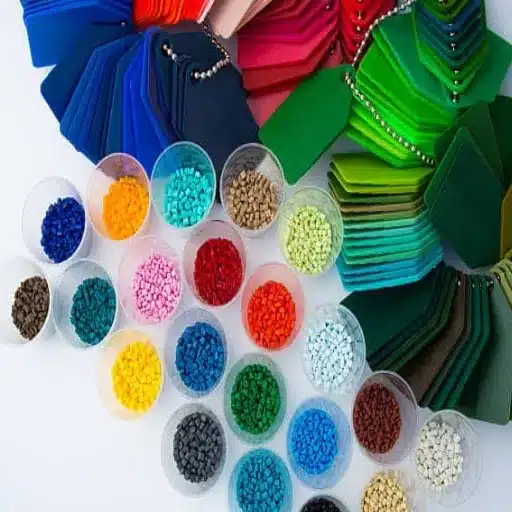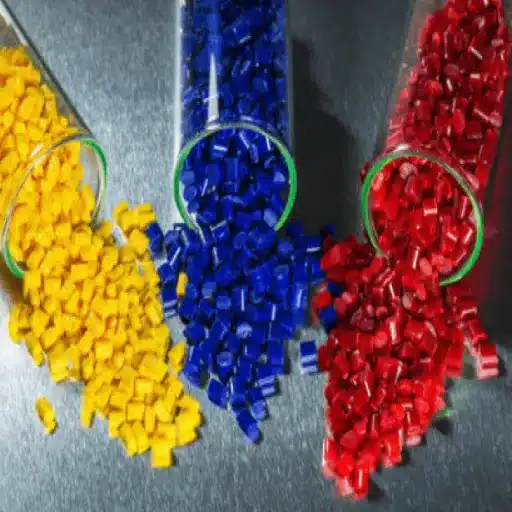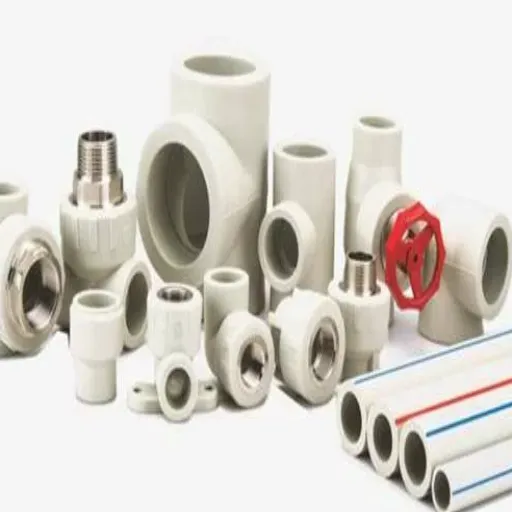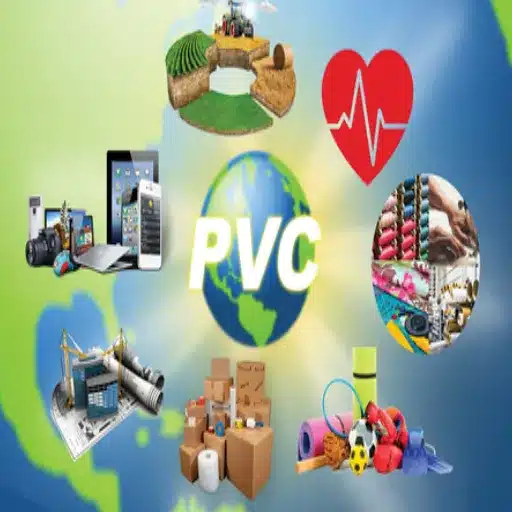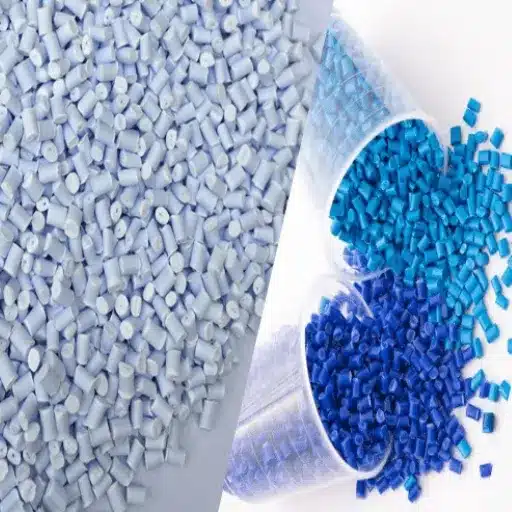Polyvinyl chloride, commonly known as PVC, is considered a leading material in several industries; however, its classification and action lead to several discussions in the field of material science. One of the enduring questions is whether PVC should be considered a thermoset or thermoplastic, as it is generally used for cable insulation, where durability, flexibility, and thermal performance are paramount. This article aims to demystify what PVC really is, examining its chemical and physical properties and exploring its applicability as a versatile material in the manufacturing and electrical industries. By the time readers finish this revelation, they will have a clearer understanding of how PVC’s unique properties influence its classification and why it is currently a vital component for engineering and material-based applications.
Understanding PVC and Its Classification
What is PVC?
Polyvinyl chloride, or PVC as it is more commonly termed, is one of the most widely manufactured synthetic thermoplastic polymers. Chemically, PVC is made from polymers of vinyl chloride monomer, which lends it a very versatile molecular structure. It is a widely used, valuable material for its excellent durability against chemical reactions and flame resistance. The molecular structure is approximately 57% chlorine and 43% carbon by mass, which gives the material excellent resistance to combustion and deterioration.
PVC Types:
- Rigid (RPVC): Stronger type with weather resistance, used in construction for pipes, window frames, and siding
- Flexible PVC: Contains plasticizers for softness, used in coating electrical cables, manufacturing medical tubes, and producing synthetic leather
From the manufacturing side, the production cost is relatively low compared to that of many other polymers, primarily due to the availability of raw materials derived from salt and petroleum derivatives. The use of PVC continues to grow on a global scale, where it is found to be utilized in industries such as construction, healthcare, electronics, and consumer goods. Its tensile strength, along with its capacity to be molded into complex shapes, assures that it qualifies for both standard and high-performance uses.
Thermoplastic versus Thermoset: Major Differences
Thermoplastics and thermosets are two primary classes of polymers that exhibit distinct properties and applications. The primary difference lies in what happens when the polymers are heated. Thermoplastics soften upon heating and become malleable, a behavior exhibited because they are linear or slightly branched polymer chains. Consequently, thermoplastics can be reheated, reshaped, recycled, and used in manufacturing processes without their properties significantly degrading, offering both versatility and sustainability. Examples include polypropylene (PP), polyethylene (PE), and polycarbonate (PC).
Conversely, thermosets undergo irreversible curing processes, such that once they are in shape and hardened, they cannot be remelted or reshaped. This phenomenon happens due to the creation of cross-linked bonds between their polymer chains. Thermosets are thus well valued for their heat resistance, structural integrity, and durability, and can be employed in high-grade applications such as electrical insulations, automotive components, and aerospace materials. Some thermosets include epoxy resins, phenolics, and polyurethane.
| Property | Thermoplastics | Thermosets |
|---|---|---|
| Heating Behavior | Soften and become malleable | Cannot be remelted or reshaped |
| Recyclability | Can be recycled multiple times | Limited recyclability |
| Market Share | ~80% of total production | ~20% of total production |
| Applications | Consumer goods, packaging, automotive parts | Aerospace, electrical insulation, high-performance components |
Thermoplastics dominate the global polymer market, accounting for approximately 80% of total production, primarily due to their ease of processing and recyclability. Thermosets, on the other hand, find importance in industries where materials are required to have greater strength, thermal stability, and chemical resistance. A consideration of the key differences between these two types of polymers allows manufacturers and engineers to select the most appropriate material for a given application, considering aspects such as performance, cost-effectiveness, and environmental impact.
PVC as a Thermoplastic: Features
The polymer, widely used for varied applications and considered versatile, is PVC. It is obtained from a monomer named vinyl chloride and exhibits a range of physical and chemical properties that make it suitable for numerous applications. Depending on how it is formulated and processed, it could reach a tensile strength of 2,900 to 7,100 psi. Typically, it is highly resistant to corrosive substances, including acids, alkalis, and salts; therefore, it can be used in corrosive environments, such as piping systems and storage tanks, as well as for industrial purposes.
Key PVC Properties:
- Tensile Strength: 2,900 to 7,100 psi
- Operating Temperature: Up to 140°F (60°C) for rigid PVC
- Chemical Resistance: Highly resistant to acids, alkalis, and salts
- Flame Resistance: Natural flame-retardant properties due to chlorine content
PVC displays relatively high mechanical strength and rigidity. Adding plasticizers can confer flexibility on these plastic materials. Furthermore, its highest operating temperature is 140°F (60°C) for rigid PVC, providing stability in mild heat conditions. Finally, the flame-retardant properties are those associated with PVC, which is rich in chlorine, and that inhibit combustion. Hence, this means that, along with its characteristic properties and extended lifespan, PVC also finds excellent uses in construction, electrical insulation, medical devices, and consumer goods.
Thermosetting Plastics: An Overview
Defining Thermosetting Plastics
Thermosetting plastics, also known as thermosets, are polymers that can irreversibly cure into a tough and durable structure when exposed to heat, chemical additives, or irradiation. In most cases, curing involves the absorption of cross-linking agents, thereby generating highly stable three-dimensional networks of polymer chains, which are basically absent from thermoplastics. Thermosets cannot be remelted and reshaped after curing, endowing them with superior stability against thermal effects, mechanical strength, and chemical resistance.
For instance, codes used are epoxy resins, phenolic resins, and polyurethanes, covering a wide variety of industrial applications. Their physical traits make them well-suited for environments that demand high performance, such as the aerospace, automotive, and electronics industries, where they find applications as adhesives, coatings, insulating materials, and lightweight composite components. To name a few, epoxy resins have tensile strengths in excess of 50 MPa and a very low coefficient of thermal expansion and are, hence, used in structural applications where high performance is needed. On the other hand, phenolic resins offer outstanding flame resistance and can withstand temperatures of up to 300 °F (150 °C), depending on the specific formulation used. It is precisely these traits that make thermosetting plastics essential in all of modern engineering and manufacturing.
Common Examples and Applications
Due to their mechanical strength, chemical resistance, and heat resistance, thermosetting plastics are used in various industries. Epoxy resins, for example, are used in the aerospace and automotive industries. The epoxy resin’s ability to adhere well to surfaces and resist environmental stress cracking makes it perfect for bonding advanced composite materials to manufacturing lightweight structural parts.
Phenolic resins are employed extensively in electrical systems as insulating materials. Thanks to their excellent fire-retardant capabilities and dielectric strength, they are used in circuit boards, high-voltage insulators, and as housings for electrical equipment. Moreover, polyurethane resins are widely used for rigid foams in building insulation and refrigeration due to their excellent thermal insulation performance and dimensional stability.
Epoxy Resins
Used in aerospace and automotive industries for bonding composite materials and manufacturing lightweight structural parts.
Phenolic Resins
Used in electrical systems for insulation, circuit boards, and high-voltage equipment housings.
Polyurethane Resins
Used for rigid foams in building insulation and refrigeration applications.
There is a good number of other series of unsaturated polyester resins, mainly being used in the production of fiberglass-reinforced plastics (FRP). Hence, these materials find applications in various fields, ranging from marine to transportation, due to their durability and corrosion resistance. FRPs are extensively used in boat hulls, storage tanks, and automotive body parts, providing high-strength solutions while also being the best option for weight reduction.
In the electronics sector, melamine formaldehyde thermosetting plastics are used to manufacture heat-resistant and durable items for home use, including laminates, countertops, and molded kitchenware. The versatility and dependability of thermosetting plastics make them ever-important in engineering, manufacturing, and consumer product industries.
Comparison of Thermosetting and Thermoplastic Materials
Given the differences in their chemical and physical properties, thermosetting and thermoplastic materials are optimally suited for different types of industrial applications. Once cured into a hard state, thermosetting plastic materials can never be softened again due to the presence of a cross-linked polymer structure. This rigid structure consequently allows thermosetting materials to exhibit greater heat resistance and mechanical stability. Examples include epoxy resins, melamine formaldehyde, and a grating of mild phenolic resin known as Bakelite, which finds usage in several sectors, including high-temperature applications, electrical insulation, and chemical resistance coatings.
With that being said, thermoplastics behave in the exact opposite way as thermosets upon heating. These are materials that soften when heated and harden when cooled, and this cycle may be repeated several times without any appreciable loss of properties. With physical recycling possible, the recycling of these plastics becomes a mainstay. Due to their ease of processing, low weight, and flexibility, materials such as polyethylene, polypropylene, and polycarbonate are widely used in the production of automotive parts, packaging materials, and consumer goods.
Technical comparisons reveal differences in the materials in aspects such as tensile strength, density, and thermal performance. For instance, thermosetting polymers generally exhibit better dimensional stability and resistance to creep under load, while thermoplastics are superior in terms of impact resistance and ductility. Recent advances in materials science have even further improved their properties, such as reinforced thermoplastics with better strength-to-weight ratios and high-performance thermosets for aerospace applications.
It is critical to understand these distinctions to allow for the right material selection based on operating conditions, environmental exposure, and end-use requirements, guaranteeing optimum performance and efficiency in engineering and manufacturing processes.
The Role of PVC in Insulation
PVC as a Material for Cable Insulation
Arguably, PVC represents a material with impressive potential for cable insulation due to its rare combination of properties. Flame resistance and self-extinguishing characteristics play a crucial role in ensuring fire safety standards in various industrial and residential applications. Obtaining perfect dielectric strength, therefore guaranteeing its electrical insulating property and preventing the flow of current, is another virtue of PVC. In addition, resistance to hostile environmental factors, including moisture, chemicals, UV rays, and mechanical abrasion, ensures and guarantees durability, thereby increasing its preference in unfavorable operating conditions.
Recent PVC Advancements:
- New generation plasticizers for flexible insulation
- Heat-resistant and fire-resistant PVC grades
- LSZH (Low Smoke Zero Halogen) formulations
- IEC 60332 compliant formulations
Recent advancements in PVC formulations have indeed enhanced the reach of various applications for PVC. In the case of smaller wires, the newer generation of plasticizers even allows for flexible insulation without impairing its mechanical and thermal characteristics. Today, heat-resistant and fire-resistant categories of PVC comply with reputable international standards, such as IEC 60332, which describe the performance criteria under fire conditions. Moreover, recent PVC grades, such as LSZH, have been increasingly preferred in public areas and tightly confined spaces, where minimizing toxic fumes and maintaining visibility during a fire are critical performance parameters.
PVC is produced because it is inexpensive, compatible with both conventional manufacturing processes and newer technologies, and therefore has a wide range of applications. Due to its sizes and voltage ranges, it could be any cable, thus rare in the industry from telecommunications to power distribution. Furthermore, research continues to enhance PVC’s qualities for recycling and sustainability, aligning with global environmental standards.
Advantages of PVC Insulation
PVC (Polyvinyl Chloride) possesses several unique properties that make it the ideal material for electrical insulation. High dielectric strength enables optimum performance in both high- and low-voltage operations, making for efficient and safe electricity transmission. Thermal stability enables it to maintain its integrity across a range of operating temperatures, ensuring reliability over time. Finally, it is water-resistant and can stand chemical attacks and the harmful effects of UV radiation, making it suitable for outdoor and other harsh environmental conditions.
Economic Benefits of PVC Insulation:
Lower initial investment compared to alternatives
Reduced maintenance and replacement costs
Low-smoke, halogen-free formulations available
From an economic perspective, PVC is favored for its cost-effectiveness and long lifespan. It has been observed that maintenance and replacement expenses are drastically reduced throughout the life of a project due to the long lifespan of PVC-insulated cables. In addition, compounded PVC has been developed into low-smoke and halogen-free formulas with enhanced fire safety, as they emit a minimal amount of toxic gases upon combustion. From industry to household wiring, PVC is fundamental to modern insulating systems.
Challenges and Considerations in PVC Insulation
Although PVC insulation offers mounting advantages, some challenges persist in achieving an optimal balance of performance and application. A key consideration is the environmental impact of PVC throughout its lifecycle. Leaching out during the production and disposal phases, these chemicals are harmful to ecosystems and human health; one of those is dioxins. Furthermore, older PVC formulations contained plasticizers that are now identified as environmental concerns and human health hazards.
Key Challenges:
- Temperature Limitations: Relatively low upper temperature limit (70°C to 105°C)
- Environmental Impact: Potential dioxin release during production and disposal
- UV Degradation: Material brittleness without UV stabilizers
- Cold Weather Performance: Reduced pliability at low temperatures
- Advanced Formulations: Trade-offs between properties and cost
The other challenge involves thermal performance. PVC has a relatively low upper temperature limit, typically ranging from 70°C to 105°C, depending on the fabrication method employed. Prolonged exposures at temperatures above this will inevitably lead to material degradation with compromised insulation integrity; therefore, in its unmodified form, it is not considered ideal for any high-temperature application. While flame retardancy in most cases can be deemed a positive attribute for PVC, in high-temperature conditions, this feature gives way to the use of special additives.
Issues affecting mechanical flexibility increase over time, especially when subjected to environments rich in UV radiation or those with low temperatures. In the case of UV exposure, material brittleness may occur if no UV stabilizer is added, whereas low temperatures hinder pliability, thereby limiting performance in harsh outdoor conditions. Lastly, advances in low-smoke, halogen-free PVC formulations mainly ensure fire safety, which usually means sacrificing at least one of the mechanical properties or price later. These advanced formulations are not competitive or attractive enough for certain types of uses.
To this end, it will be essential to conduct further research on alternative additives, compounding techniques, and recycling to mitigate environmental concerns and optimize performance. The availability of new variants of PVC-functionalized for sustainability might open up opportunities for this versatile material to meet future industrial demands and regulatory requirements.
Applications of PVC in Different Industries
PVC in Construction and Building Materials
Polyvinyl chloride is one of the most widely used substances in the construction industry, offering advantages in terms of durability, affordability, and versatility. It is implemented as a probable factor in various building applications. Primarily, PVC is used in the manufacture of pipes and fittings for water distribution, sewage, and drainage systems because it resists corrosion fairly well and has a relatively long lifespan. Such studies suggest that PVC pipes in service can last for well over 50 years with slight degradation under normal operating conditions.
Construction Applications
- Water distribution pipes
- Sewage and drainage systems
- Window frames and doors
- Building siding
- Electrical conduits
Energy Efficiency Benefits
- Insulated window profiles
- Heat flow regulation
- Reduced heating/cooling costs
- Green building compliance
- Sustainable construction practices
PVC is also a significant material for fabricating window frames, doors, and siding for buildings. Since the material offers maximum resistance to environmental stresses, such as UV radiation and weathering, it is favored for outdoor use. PVC flooring, which withstands wear and tear and requires little maintenance in any case, now boasts a more modern design with innovations like luxury vinyl tiles (LVTs).
An advantage of PVC in construction is that it enhances energy-efficient measures. PVC-related materials, such as insulated window profiles and cladding, help regulate the flow of heat and reduce unnecessary heating and cooling operations within buildings, thereby becoming a vital factor in green building.
From scaffolding panels to electrical conduits, PVC has been experiencing growing demand across a broad spectrum of construction-related applications. Its capability to be recycled in line with environmental regulations will enhance its relevance as industries shift toward sustainable practices.
Consumer Products from PVC
Polyvinyl Chloride (PVC) has become an indispensable material for various consumer products due to its versatility, durability, and low cost. One frequent application is that of household plumbing, where PVC pipe provides a lightweight yet sturdy means for transporting water. Furthermore, PVC is extensively used for many everyday applications, such as credit cards, which require a degree of lateral strength and resistance against wear over time.
Consumer Product Applications:
Plumbing pipes, credit cards, cling wraps
Synthetic leather upholstery, vinyl floors
Electrical cables, consumer electronics safety
Food-grade materials, blister packs
Other notable applications include home furnishings, synthetic leather upholstery for furniture, and vinyl floors that offer durability and are resistant to stains and moisture. Also, PVC-laden electrical cables provide the best thermal and electrical properties, a necessity for consumer electronics safety.
The material also finds use in packaging, primarily in food-grade cling wraps and blister packs, as it can create durable, protective, and transparent enclosures. The demand for PVC in consumer goods reflects a material that is essential for producing products that strike a balance between functionality, cost-effectiveness, and long-term performance.
Innovations in PVC Technology
The PVC (polyvinyl chloride) technology innovations have reached modern times, with the material overcoming sustainability and performance concerns, thereby increasing its utility. An important area of advancement concerns bio-attributed PVC that integrates renewable feedstock to reduce its dependence on fossil-based raw materials. This minimizes carbon emissions throughout the product’s lifecycle, aligning with global efforts to mitigate environmental impacts.
Recent PVC Innovations:
Bio-Attributed PVC
Integration of renewable feedstock to reduce fossil fuel dependence
Phthalate-Free Plasticizers
Safer formulations for medical and food applications
Advanced Processing
Energy-efficient polymerization and advanced catalysts
Recycling Technologies
Mechanical and chemical recycling for circular economy
Next came the introduction of new plasticizer formulations, providing safer phthalate-free types that nevertheless allow for sufficient flexibility in the polymer, thus making them preferred for medical and food applications. This, together, advances processing technologies through the incorporation of energy-efficient polymerization and advanced catalysts, improving production processes and reducing energy consumption.
Depending on a wide range of recycling methodologies, PVC has undergone substantial improvement. Several mechanical and chemical recycling methods are employed to promote a circular economy from plastic production to PVC material recovery from post-consumer products. For example, depolymerization allows PVC waste to be converted into pure monomer, offering the highest-grade recycled PVC that closely matches the original properties. The developments would naturally reflect that PVC is an actively evolving material for sustainability and high performance in other industries.
Environmental Impact and Future of PVC
Sustainability Issues Related to PVC Production
When sustainability concerns related to PVC production come into focus, greater attention is paid to these few points. Firstly, PVC production heavily relies on non-renewable resources, such as petroleum and natural gas, which are used as feedstock materials for the monomer vinyl chloride. This dependence contributes to environmental problems, including the depletion of finite resources and greenhouse gas emissions during extraction and processing. Furthermore, chlorine used in the production process can lead to hazardous by-products, such as dioxins, if not carefully controlled, which pose threats to human health and ecosystems when uncontrolled.
Key Environmental Concerns:
- Resource Depletion: Heavy reliance on petroleum and natural gas
- Greenhouse Gas Emissions: During extraction and processing
- Hazardous By-products: Potential dioxin release if not controlled
- Non-biodegradable Nature: Permanent accumulation in waste streams
- Incineration Risks: Release of harmful chemicals when burned
The second biggest problem to be addressed is the end-of-life management of PVC products. I know that incinerating wastes releases chemicals in the atmosphere that are highly harmful, such as hydrogen chloride and dioxins. From the landfill perspective, an environmental problem with PVC exists due to its non-biodegradable nature, as its plastics become permanent and accumulate in waste streams. Recycling has witnessed significant developments with respect to PVC reclamation; however, the current lack of infrastructure and impediments largely remain deterrents to the widespread acceptance of recycling activities, especially of post-consumer waste.
To address these concerns, I believe a coordinated effort is necessary among industry stakeholders, policymakers, and researchers. Alternatives based on bio-PVC, upgraded systems for closed-loop recycling, and restrictions on disposal emissions should take center stage in limiting the environmental impact of PVC production. With these interventions in place, I envision the commercial production of PVC becoming truly environmentally sustainable, alongside broader ecological pursuits.
Recycling and Disposal of PVC Materials
This is because of the chemical composition of the PVC in question and the release of harmful substances during processing. Yet, I think that advances in mechanical and chemical recycling methods have created considerable potential to mitigate PVC waste. The most common method of mechanical recycling involves shredding PVC products, cleaning them, and then reprocessing the PVC into new materials. Still, it is often hindered by contamination and degradation of the polymer. Therefore, to improve its effectiveness, great care must be taken in sorting and cleaning to stand behind higher-quality recycled materials.
| Recycling Method | Process | Advantages | Challenges |
|---|---|---|---|
| Mechanical | Shredding, cleaning, reprocessing | Cost-effective, established infrastructure | Contamination, polymer degradation |
| Chemical | Breaking down to raw materials | High-quality recycled materials | Expensive, limited scalability |
Conversely, chemical recycling represents a more comprehensive method of recycling PVC by breaking it down into its raw materials, which can be reused in manufacturing. Although more expensive and largely undeveloped at present, I am hopeful that through further research and investment, this technology may become practical and scalable in the future. And yet, PVC disposal must meet very high standards due to environmental concerns. Improper incineration of this material will release quite hazardous dioxins and heavy metals into the atmosphere.
A thought in my mind is the combination of new, innovative waste recycling techniques, somewhat stricter regulations, and an awakening of consumers to the real environmental issues associated with PVC materials. PVC will probably require its manufacturers to adhere to the closed-loop concept and design end-of-life products with a focus on recycling. The more resilient the system, I think, the better we can reduce PVC waste footprint and, thus, move towards a more sustainable, circular economy.
Future Trends in Use and Alternatives to PVC
The future of PVC use, looking ahead, will be shaped by innovations aimed at reducing pollution from PVC and the pursuit of sustainable alternatives. In view of the increasing environmental laws and growing consideration for environmentally friendly materials, significant momentum is being built for bio-based and recyclable PVC alternatives. These alternatives are made mainly from renewable sources, such as plant-based polymers, to save the usage of fossil fuels, in contrast to the full functionality level or durability offered by a concrete PVC. Moreover, chemical recycling technologies are now promising closed-loop possibilities that will enable PVC to be recycled without losing its original properties.
Future Trends and Alternatives:
Bio-based Alternatives
Plant-based polymers reducing fossil fuel usage while maintaining functionality
Modular Composites
Modern composites offering durability, lightweight properties, and recyclability
Non-toxic Alternatives
Materials for medical and packaging applications that degrade reasonably quickly
Closed-loop Systems
Chemical recycling technologies enabling full property retention
In another trend I see, modular and composite materials will find increased usage in various industries now dominated by PVC. For instance, in construction, more and more producers are turning toward modern composites that ensure reasonable durability and lightweight attributes along with recyclability, which thereby pose as an alternative to PVC in pipe, window frame, and flooring applications. Similarly, industries such as medicine and packaging are keen on pursuing PVC substitutes that are non-toxic and can degrade reasonably quickly, in line with health and sustainability considerations.
Addressing the issues holistically involves encouraging collaboration among all stakeholders, including policymakers, researchers, and industry representatives. If we place much emphasis on research and investment in green chemistry and sustainable manufacturing processes, I strongly believe we can reduce reliance on traditional PVC and move toward greener alternatives. Such a change will fulfill global sustainability goals and create more avenues for material innovations in other sectors.
Reference Sources
-
Is PVC thermosetting or thermoplastic? – Explains why PVC is classified as a thermoplastic and not a thermoset.
-
What are the Characteristics of Polyvinyl Chloride (PVC)? – Highlights the thermoplastic nature of PVC and its response to heat.
-
Thermoplastic vs Thermoset Cable Materials – XLPE, PVC, … – Compares thermoplastics like PVC with thermosets in terms of properties and applications.
-
Thermoplastics vs. Thermosets: Material Differences and … – Provides a detailed comparison of thermoplastics and thermosets, including their physical properties.
- Find more info now.
Frequently Asked Questions (FAQs)
Is PVC an example of a thermoplastic or a thermoset?
PVC is a thermoplastic. This means it can be melted and recast into new shapes repeatedly through heating. Thermoset materials, in contrast, cannot be remelted after they have been cured. A thermoplastic material, such as PVC, is easily molded into various shapes. It is for this reason that PVC is widely used to manufacture pipes, cable insulation, and flooring. This ability to be resized brings great flexibility to the manufacturing processes.
Can PVC be considered a candidate for cable insulation?
Yes, PVC is commonly used as insulation for cables due to its excellent electrical properties and resistance to environmental factors. The heat and moisture resistance of the material makes it an apt protection for electrical wires and cables. Also, PVC is resistant to many chemicals, ensuring that the insulation stays strong over time. Being a durable material, it lends longer life to cables, rendering them safe for electrical usage. Overall, PVC has properties ideally suited for cable insulation.
How does PVC fare when compared to thermosetting plastics?
PVC differs significantly from thermosetting plastics in terms of processing and properties: thermosetting plastics cannot be remelted or reshaped after curing, whereas PVC can be melted and reshaped repeatedly. The thermoplastic nature of PVC makes it easier to manufacture and recycle. It is also moldable at elevated temperatures, giving it a wider range of applications. On the other hand, thermosetting plastics are generally more heat-resistant but cannot be reshaped when required. PVC is sometimes favored in applications that require greater flexibility.
What are the benefits of using PVC in the construction industry?
There are multiple benefits of using PVC in construction. With its high durability against moisture, chemicals, and corrosion, it is an ideal building material for piping systems and window frames. It is further enhanced by light, which makes transportation and installation easier. Being versatile in nature, it can indeed come in any colors and finishes, which benefits the appearance. Additionally, it can save further money on maintenance for both builders and homeowners.
Is it recyclable, and how is it processed?
To some extent, a method widely used to recycle PVC involves shredding the material, melting it, and reforming it into new products. This procedure reduces waste, thereby contributing to sustainable manufacturing practices. However, PVC recycling can be more complicated than the recycling of some thermoplastics, such as polyethylene and polypropylene. Since PVC needs to be adequately separated from other materials to ensure its quality, this creates an added level of complexity. Still, the possibility of recycling contributes significantly to the belief that PVC is a highly versatile material in terms of its applications.
Key Takeaways
Classification
PVC is definitively classified as a thermoplastic, capable of being reheated and reshaped multiple times.
Applications
Widely used in construction, electrical insulation, and consumer products due to its versatile properties.
Sustainability
Environmental concerns are driving innovations in bio-based alternatives and improved recycling technologies.
Future Outlook
Continued evolution toward more sustainable formulations while maintaining performance characteristics.

